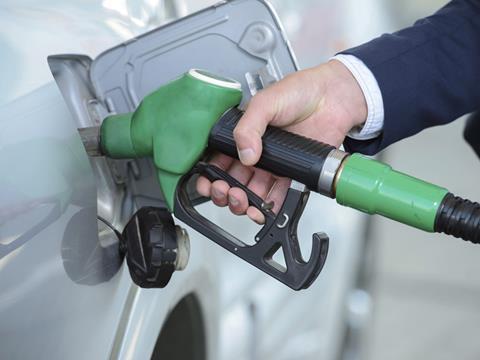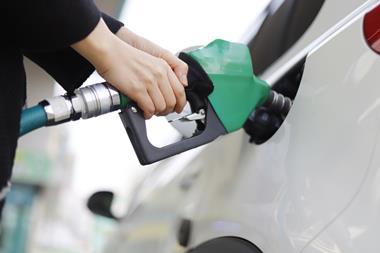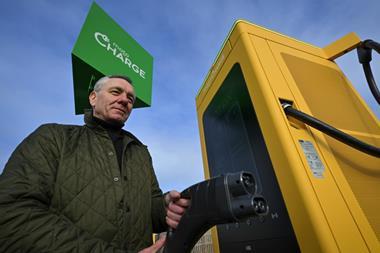
Evidence of rocket and feather pricing and increasing retailer margins has been reported by the Competition and Markets Authority (CMA) in an initial update on the Road Fuel Market Study, which was launched in July.
However, it said it needed to carry out more investigations to determine whether the increase in margins was caused by competition issues.
The study follows on from an urgent review that had been commissioned by the government to look, in particular, at whether the cut in fuel duty, announced in March 2022, had been passed on to consumers.
Unlike the urgent review in July, a Market Study allows the CMA to use compulsory information-gathering powers to probe the entire market. Since launching the study, the CMA reported that it has secured information, including company level financial data, from retailers, refiners and wholesalers. The CMA has also conducted in-depth analysis of fuel prices over the past five years, rather than just the one year covered by the urgent review.
In its update on the market study it reports:
- It found no evidence of rocket and feather pricing in the years before 2022, but there was some evidence of rocket and feather behaviour emerging this year, particularly for diesel. It suggested this could be driven by the extreme volatility of prices and supply in 2022 and said it would investigate further.
- Annual retailer fuel margins are increasing, but the causes are not yet clear. Between 2017 and 2021, the difference between the price retailers paid for fuel and the pump price rose by the equivalent of 2-3ppl on diesel and 3-pl on petrol. It suggested this could be accounted for by other cost rises for retailers or weaker competition on fuel, and added it would investigate further.
- Prices vary widely between local areas. It looked into what may be causing high prices in certain areas and found that prices are likely to be higher at petrol stations where there are few (or no) competitors nearby – and particularly where there is no local supermarket petrol station. Again it said it will investigate this further.
- 2022 is the most volatile year for fuel prices since reliable records began. Prices rose by around 50ppl from January to July, the largest leap in fuel prices ever recorded in one year, before falling by 31ppl for petrol and 14ppl for diesel since.
- The gap between diesel and petrol prices has become larger than ever reliably recorded. Diesel now costs 24ppl more per litre than petrol. This is largely due to Western Europe’s reliance on imports of diesel, but not petrol, from Russia.
- Refining margins have risen and continue to be very volatile. This leads to higher prices at the pump, but the CMA said it did not see evidence that this is down to competition problems in the UK.It added: “Refining margins are largely dictated by global supply and demand. Over the medium term, UK refiners have not earned profits at levels that would give us cause for concern”
The CMA’s interim chief executive Sarah Cardell said: “It has been a terrible year for drivers, with filling up a vehicle now a moment of dread for many. The disruption of imports from Russia means that diesel drivers, in particular, are paying a substantial premium because of the invasion of Ukraine. A weaker pound is contributing to higher prices across the board too.
“There are no easy answers to this. The question for the CMA is whether a lack of effective competition within the UK is making things worse. Although it is only a small proportion of the overall price, the increase in margins for many fuel retailers over the last few years is something we need to investigate further. The key thing we need to establish next is whether this development is down to competition problems or not.”
The CMA is now inviting views and comments on the emerging evidence published today. A further update, including options for possible next steps, will be published in the Spring.
The RAC reacted with disappointment to the update claiming there was far more evidence of rocket and feather pricing and urging the biggest retailers to drop their prices.
RAC fuel spokesman Simon Williams said: “While it’s encouraging the CMA has found evidence of rocket and feather pricing taking place this year, we believe there was clear evidence of it happening this time last year and in 2018 and 2019. Volatility has unquestionably been an issue in fuel pricing since Russia invaded Ukraine but when wholesale prices trend down for weeks at a time drivers should see pump prices do the same at a similar rate. Unfortunately our data shows that this is not often the case.
“What’s happening now – as it was last December – is a massive downward shift in the price of wholesale fuel with a slow dropping of forecourt prices. Consequently, drivers are set for a more expensive time on the roads this Christmas than it should be.
“The wholesale price of petrol has fallen from 130ppl at the beginning of October to 109ppl yesterday – a drop of 21ppl. Meanwhile, the average price of unleaded at the end of October peaked 166.88ppl, but has to date only fallen 8ppl to 158.91ppl. Even accounting for the accepted lag for cheaper wholesale prices to filter through to forecourts, this is too slow, particularly as the biggest retailers buy new stock so often.
“The situation with diesel is even worse as it [the wholesale price] plummeted by 33ppl over the same period but the average retail price has only come down by 8.4ppl from 191.12ppl to 182.71ppl.
“We strongly urge the biggest retailers to lower their prices. Unfortunately, we fear they are holding out, hoping for a rise in the price of oil later this month.”
A UKPIA spokesperson said: “UKPIA welcomes the interim decision by the CMA not to make a market investigation reference at this time, following the CMA’s initial update report on its road fuel market study which it published today. We note that the CMA agrees with our view that ‘refining margins are largely dictated by global supply and demand.’
“UKPIA understands that price increases at the pumps are a concern for motorists, families and businesses across the UK. Prices this year have been most affected by changes in crude oil prices and other supply and demand factors, which have been particularly volatile in 2022 due to factors outside of the industry’s control.
“We will continue to work with the CMA as their analysis is completed.”



























No comments yet